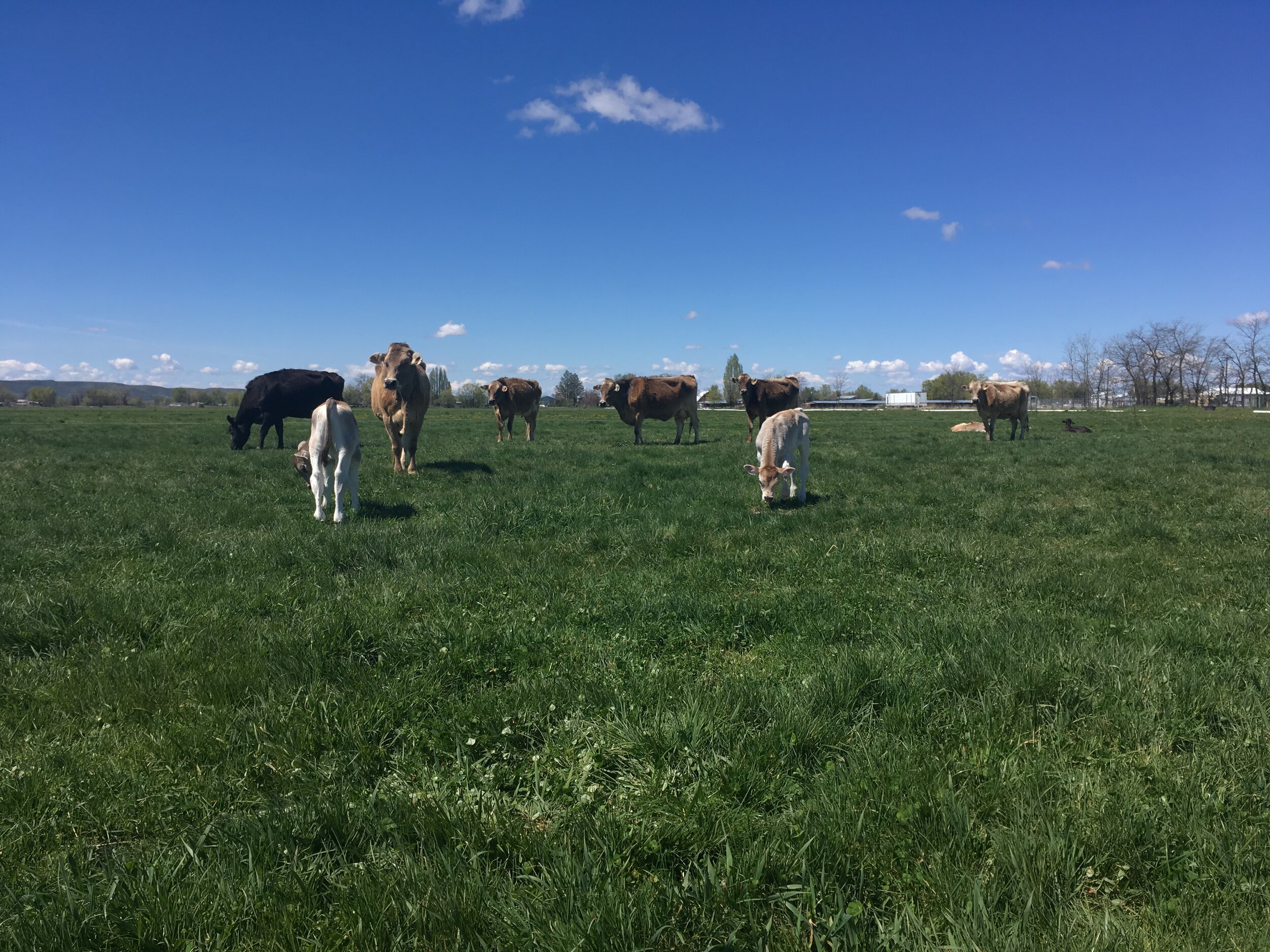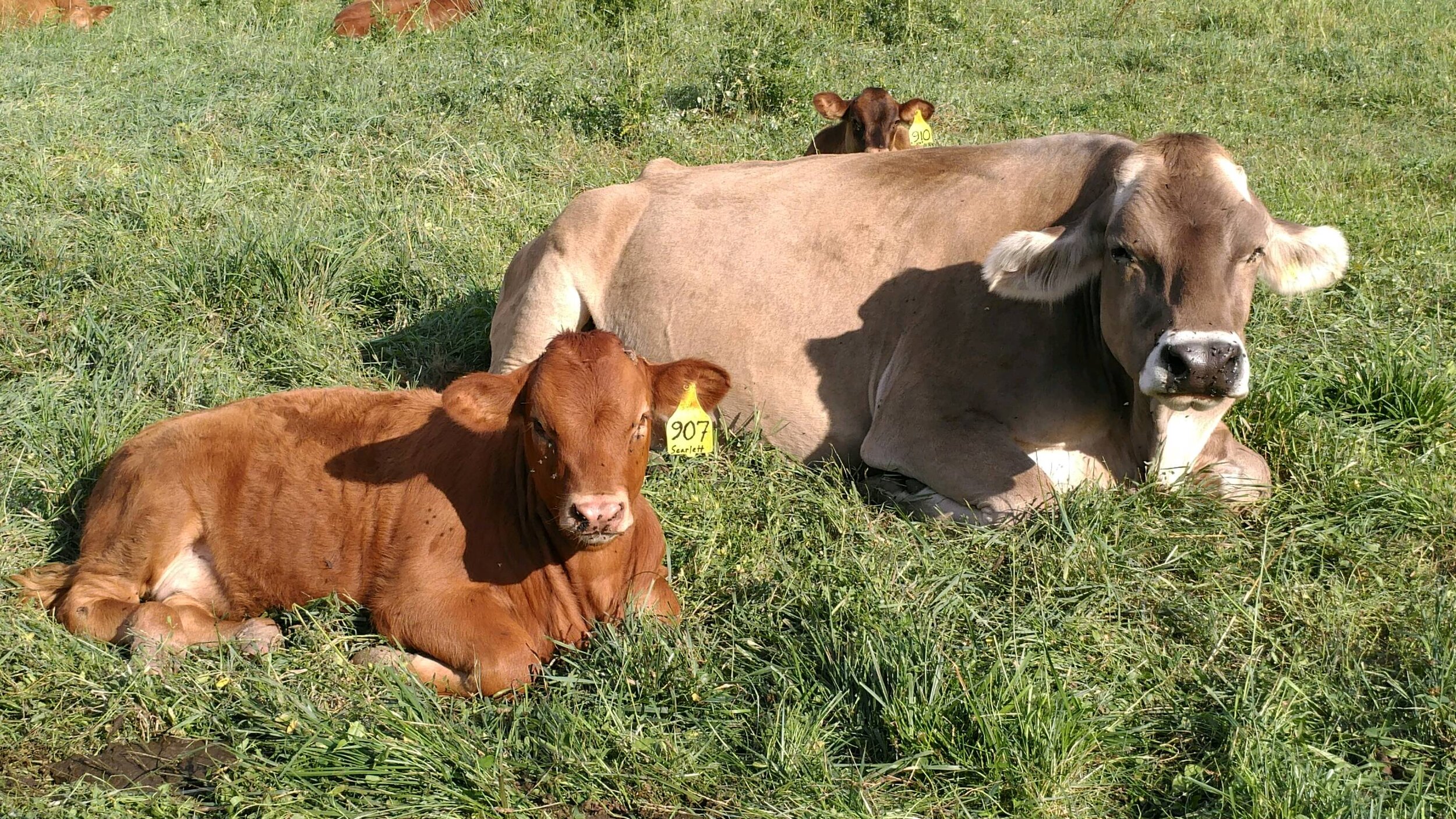It’s been a busy month!!
March kicked off with Aaron getting married on the 7th! He and Heather have been dating for a couple years now, enjoying work outs, working on the farm, and adventuring in the mountains and boating on the reservoir.
The wedding was lovely, with bagpipes and Celtic music, dancing, and good food. Aaron and Heather used Aaron’s Scottish basket-hilted broadsword to cut their cake!
Aaron and Heather took off for a week in Moab, Utah for a short honeymoon hiking in Arches National Park. Then back to regular life and spring speeding up on the farm. Heather works as a CT tech at a hospital in Nampa but enjoys coming out to the farm to help with all and sundry projects, Aaron continues to work full time on the farm.
We started calving! We’re up to more than a dozen new babies so far, with plenty more on the way. It is a good calving season, largely due to Claire’s diligence in checking on mamas and babies and working with them before an issue can develop. Most of the time they are fine all by themselves and we (she), can just watch, but once in a while we step in to help guide a baby to where it needs to be to nurse, or to settle a new mama down if she’s unsure about things.
Last year we used a Brown Swiss bull that we raised ourselves to keep the Swiss genetics that we like so much, so these are really sweet friendly little calves. Aaron had one following him up the field last week when he was moving the cows to a new paddock. The mamas all took off for new food, and one little baby was by himself napping in the sunshine. As Aaron walked over to find him, he woke up and instead of panicking and running away, he just stood up and came over to see Aaron and follow him up the field to where his mama was waiting. Happy day. :)
Other new faces on the farm are about 600 baby chicks that arrived last week! We are raising meat birds for Josiah of J-Bar Farms, as some of the only Organic chicken raised in Idaho. He will be marketing these, we are only raising them.
Once the chickens are big enough (about 4 weeks old) they will be in mobile chicken coops in our pastures and moving every day to fresh grass just like our cows. We are really excited to see how adding this new species into our pasture rotation will increase the fertility of the ground and possibly even knock back our already small fly and mosquito population.
Other activities these last few weeks include the normal spring run of projects getting ready for a new season of growing: burning and weed-whacking ditches to prepare for irrigation water that comes in around April 15; harrowing fields to spread out the manure and hay from winter feeding and dethatch the last of the wintered grass; and feeding out the final few bales of hay so the barns and stack areas are all clean and ready for our hay harvest this summer.
We also keep moving beef along to our friends and customers! It hasn’t been the crazy rush we had a year ago, but demand has been steady. It’s so nice to have our inventory all stored here onsite in the new freezer! Call us up and come by to try out our beef or refill your freezer!
Cheers to you and yours! Hope your spring is full of sunshine and fresh air and flowers. It’s getting on toward barbecue weather…….




































